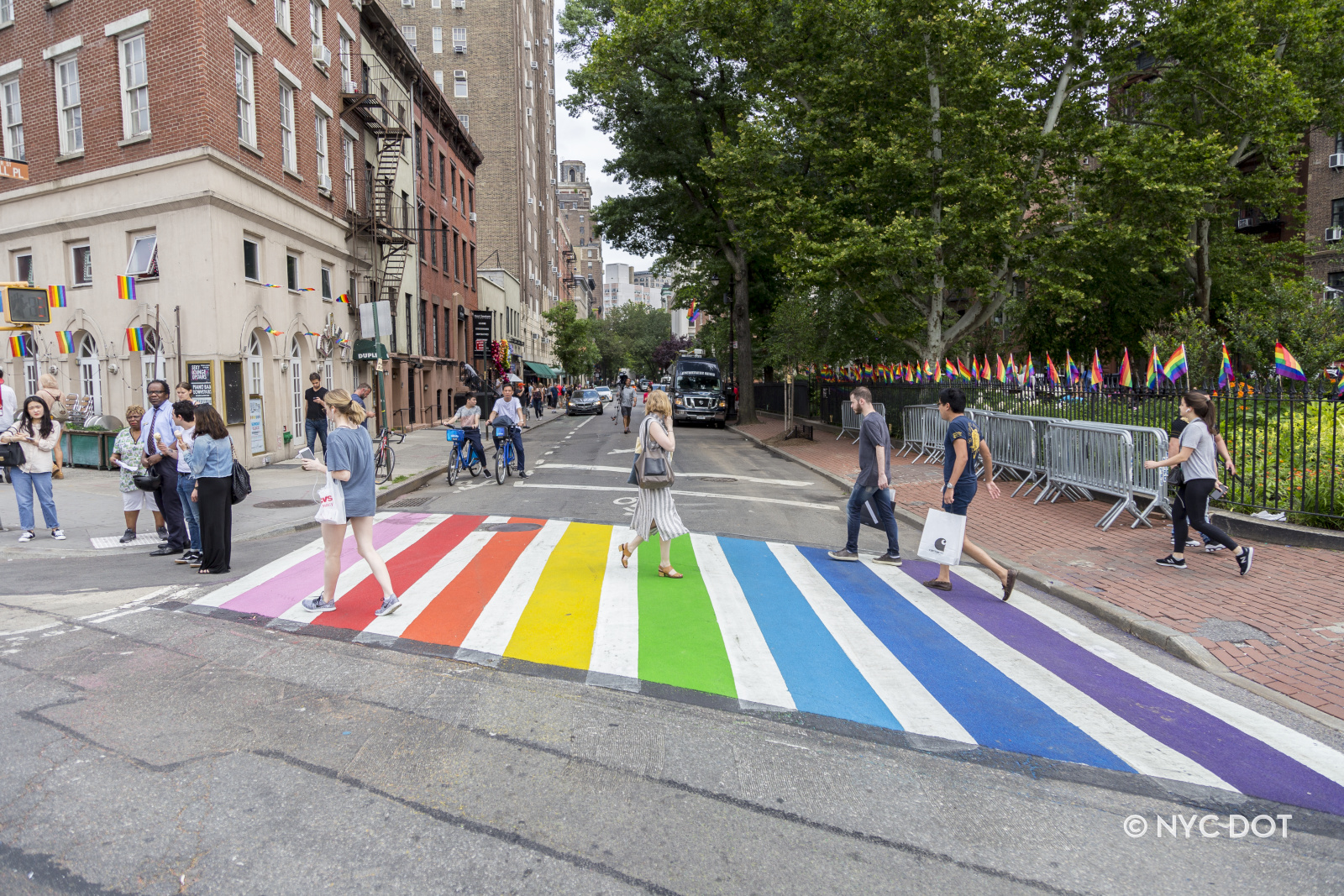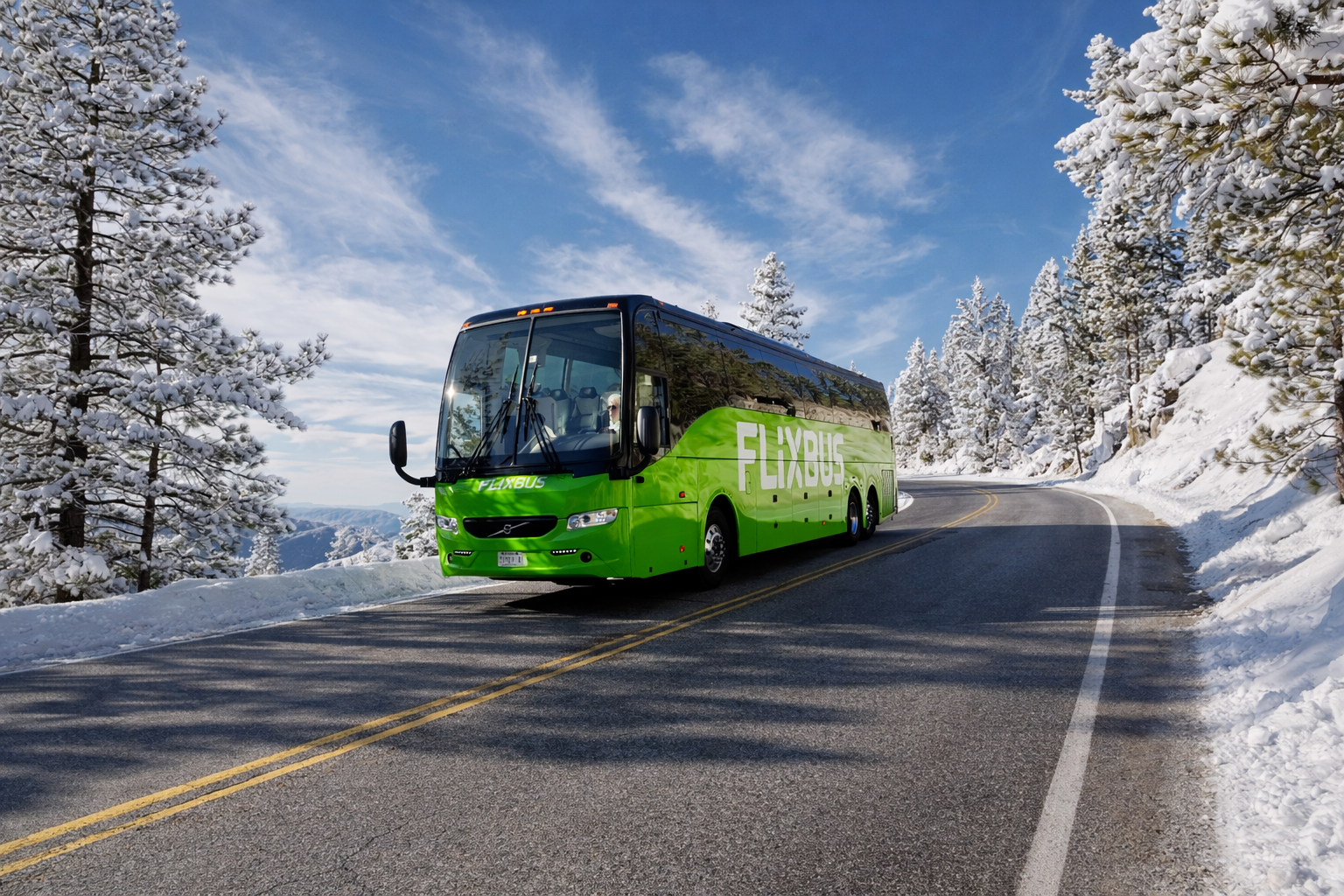As cities make headlines for removing life-saving "rainbow crosswalks" to appease the Trump administration, some advocates are wondering if cities that install pro-police-themed street art will be ordered to un-paint GOP-coded symbols, too.
Three protesters in Orlando made headlines over Labor Day weekend when they were arrested after they allegedly chalked in a rainbow crosswalk that the Florida Department of Transportation had recently removed.
Amid a Wave of Mass Shootings, Florida Cracks Down on ChalkAn arrest in Orlando is the latest escalation in Republicans’ war on rainbow crosswalks.Jeremy SchulmanSenior News Editorwww.motherjones.com/politics/202...
— NewJukeboxCafe 🇨🇦 (@newjukeboxcafe.bsky.social) 2025-09-01T02:20:13.951Z
That crosswalk — which was painted in memorial to the 49 predominantly queer victims of the 2016 Pulse nightclub massacre — was erased in response to U.S. Department of Transportation's ongoing crackdown on "distracting" roadway markings, which Sec. Sean Duffy launched in July.
Duffy's directive was theoretically aimed at all manner of non-standard traffic control devices, though he specifically singled out "rainbow crosswalks" on his social media account as "political banners [that] have no place on U.S. roads" because they also make roadways less safe.
Of course, they don't: A 2022 report from Bloomberg Philanthropies found that vibrant road markings painted by the organization were actually associated with a 50-percent reduction in crashes with vulnerable road users. Other experts say there's little evidence that colorful road markings cause any harm at all.
And some advocates were quick to point out that asphalt art can take many forms — like Oregon-based planner Don Kostelec, who wondered whether conservative-coded crosswalks would get the same treatment as Orlando's pride-themed symbol.
"[Is there] a double-standard to mandate the removal of some types of decorative street paint while allowing others?" Kostelec told Streetsblog. "Will [political messages of which the Trump administration approves] be looked at the same as rainbow crosswalks?"
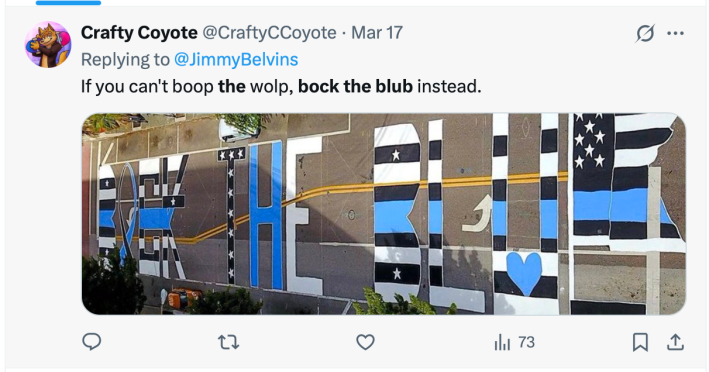
Florida itself is seemingly erasing all of its street murals — including the infamous "Back the Blue" message outside the Tampa police department, which some locals have re-dubbed "Bock the Blub" for its misguided typography choices — but Kostelec says it's less clear the other jurisdictions are taking such a consistent approach.
For instance, the "thin blue line" crosswalk in Walpole, Massachusetts (below) was still visible on Google Street View as recently as June; according to the Walpole Police Department, it was painted in 2018 to "represent the line that police hold between order and chaos and our citizens and criminals."
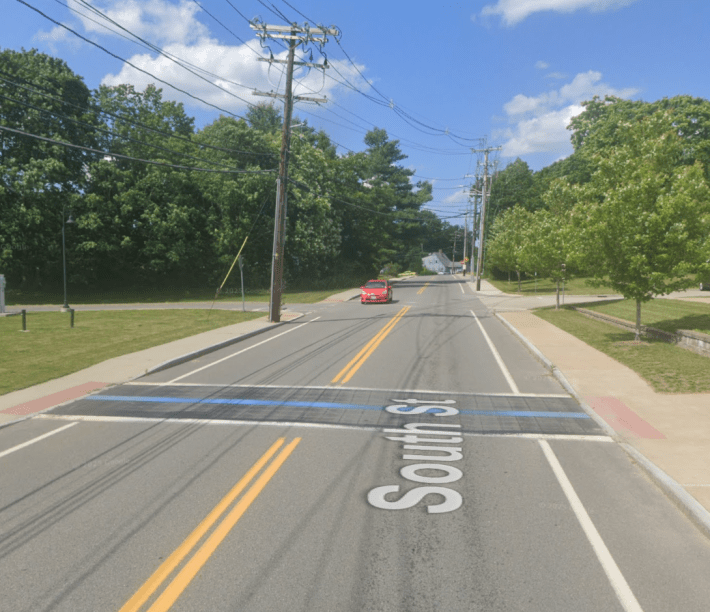
And back in 2016, several New Jersey cities painted a blue lines down the center of their roads in a similar show of support for police, with some communities adding red lines to honor fallen fire fighters, according to the Baltimore Police Museum. That effort inspired imitators in Ocean City, Maryland, who painted a similar line outside their police station in 2017 (below).
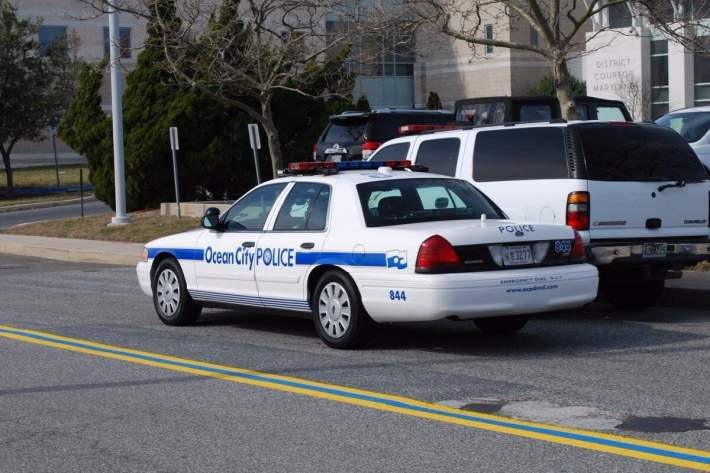
And here's another one (albeit badly faded) in Milton, Delaware, which sits adjacent to another, less politically charged crosswalk installation. The police-themed crosswalk in the top center of the photo was installed in 2017 in direct coordination with Delaware DOT, and was still present on Street View in June, 2024.
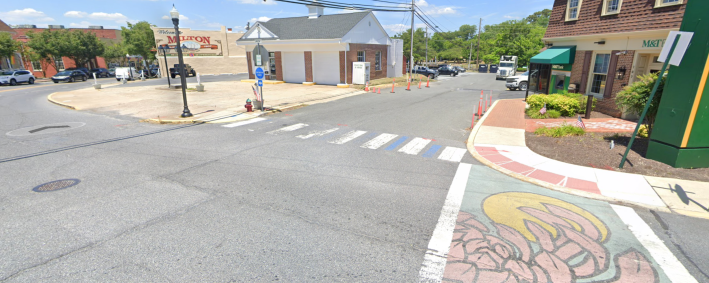
At the time, though, both the Maryland and New Jersey examples above faced pushback for their pro-law enforcement street art, which the Federal Highway Administration said didn't comply with the specifications for center lines outlined in the the Manual of Uniform Traffic Control Devices. Colloquially known as the MUTCD, the guidebook governs much of how U.S. roads are designed — and as of the most recent version, it still specifies that standard crosswalk markings "shall be white."
That same guidebook, though, has historically faced criticism from pedestrian safety advocates for things like leaving it up to engineers to decide whether an intersection "warrants" high-visibility paint. Kostelec also says agencies don't always follow the safety guidelines that advocates do support.
"[The colorful crosswalk crackdown] is clearly performative, especially given the numerous pedestrian safety issues I observe with agencies not adhering to MUTCD requirements for aspects such as pedestrian safety and ADA compliance in work zones," he added.
Moreover, Kostelec also pointed out that the latest MUTCD didn't specifically prohibit rainbow crosswalks, even if it didn't explicitly allow them. Its authors even went on record in the Federal Register to clarify that "the determination as to whether a particular aesthetic surface treatment is acceptable for use in the highway right-of-way falls outside the scope and provisions of the MUTCD except to the extent that the treatment might interfere with or mimic a traffic control device."
Translation, per Kostelec: "If the feds felt that decorative crosswalks were unsafe and had the data to support it, then they would have prohibited them in the recent update to the MUTCD. That's when they had the chance."
Time will tell which U.S. cities will take advantage of that ambiguity to protect their asphalt art — and, more important, which types of asphalt art they'll allow to remain intact.
